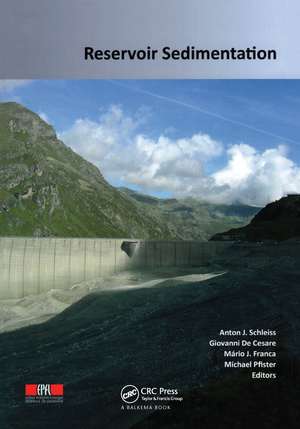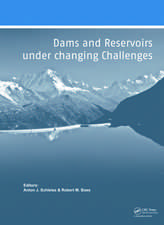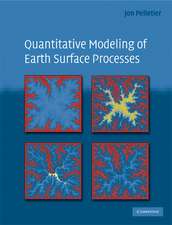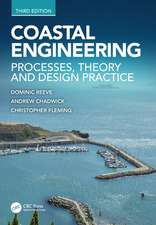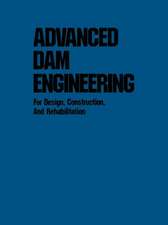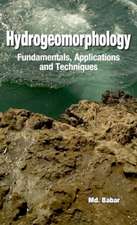Reservoir Sedimentation
Editat de Anton J. Schleiss, Giovanni de Cesare, Mario J. Franca, Michael Pfisteren Limba Engleză Hardback – 12 aug 2014
Despite the mechanisms of reservoir sedimentation being well known for a long time, sustainable and preventive measures are rarely taken into consideration in the design of new reservoirs. To avoid operational problems of powerhouses, sedimentation is often treated for existing reservoirs with measures which are efficient only for a limited time.
The today's challenge of dam owners and engineers is to guarantee with adequate mitigation measures the future sustainable use of the vital reservoirs supplying water for drinking, food and energy production. Research and development is still urgently needed to identify efficient mitigation measures adapted to the main sedimentation processes involved in reservoirs.
During the seventh International Conference on Fluvial Hydraulics "River Flow 2014" at cole Polytechnique Fdrale de Lausanne (EPFL), Switzerland, scientists and professionals from all over the world addressed the challenge of reservoir sedimentation in a special session and exchanged their knowledge and experiences. Invited and selected contributions, which give an overview on the latest developments and research regarding reservoir sedimentation including case studies, are presented in this book, in the hope that they can contribute to better sustainable use of the vital reservoirs worldwide.
Preț: 500.63 lei
Preț vechi: 682.86 lei
-27% Nou
95.81€ • 104.03$ • 80.48£
Carte tipărită la comandă
Livrare economică 22 aprilie-06 mai
Specificații
ISBN-10: 1138026751
Pagini: 272
Dimensiuni: 174 x 246 mm
Greutate: 0.66 kg
Ediția:1
Editura: CRC Press
Colecția CRC Press
Public țintă
Postgraduate and ProfessionalCuprins
Notă biografică
Descriere
Despite the mechanisms of reservoir sedimentation being well known for a long time, sustainable and preventive measures are rarely taken into consideration in the design of new reservoirs. To avoid operational problems of powerhouses, sedimentation is often treated for existing reservoirs with measures which are efficient only for a limited time.
The today's challenge of dam owners and engineers is to guarantee with adequate mitigation measures the future sustainable use of the vital reservoirs supplying water for drinking, food and energy production. Research and development is still urgently needed to identify efficient mitigation measures adapted to the main sedimentation processes involved in reservoirs.
During the seventh International Conference on Fluvial Hydraulics "River Flow 2014" at cole Polytechnique Fdrale de Lausanne (EPFL), Switzerland, scientists and professionals from all over the world addressed the challenge of reservoir sedimentation in a special session and exchanged their knowledge and experiences. Invited and selected contributions, which give an overview on the latest developments and research regarding reservoir sedimentation including case studies, are presented in this book, in the hope that they can contribute to better sustainable use of the vital reservoirs worldwide.
